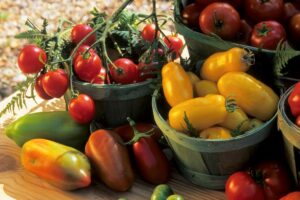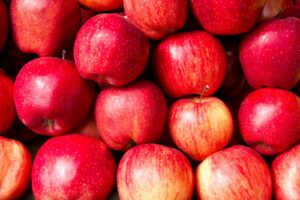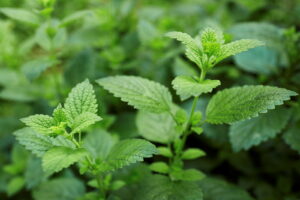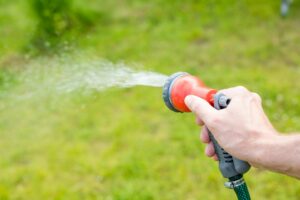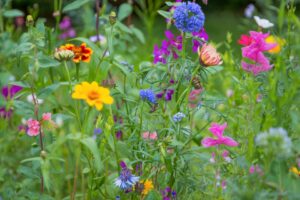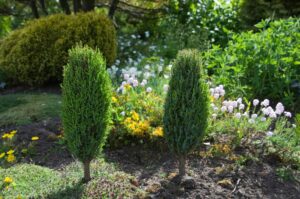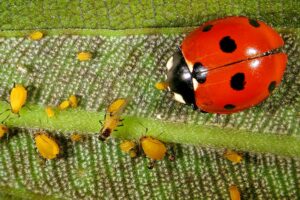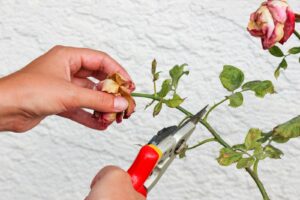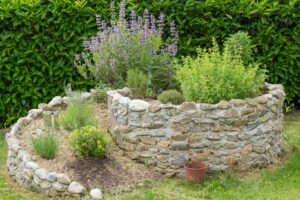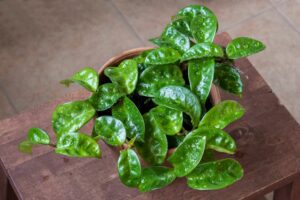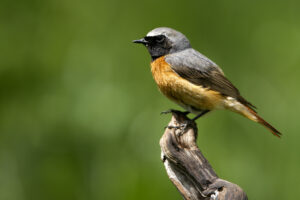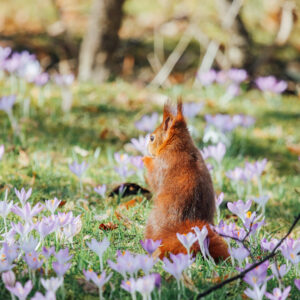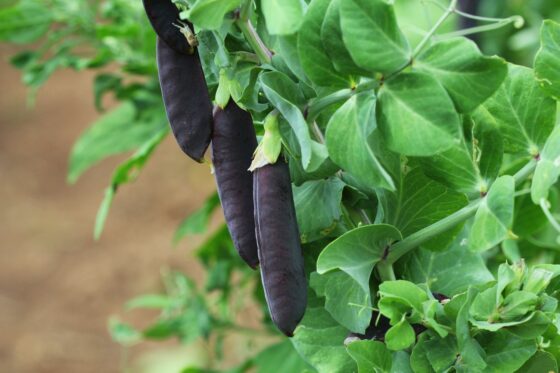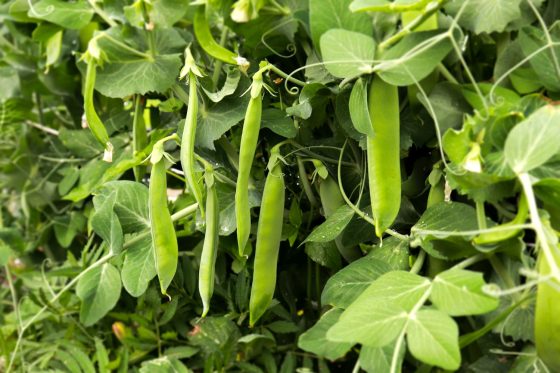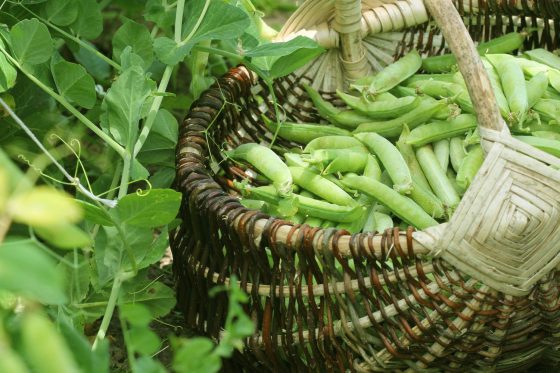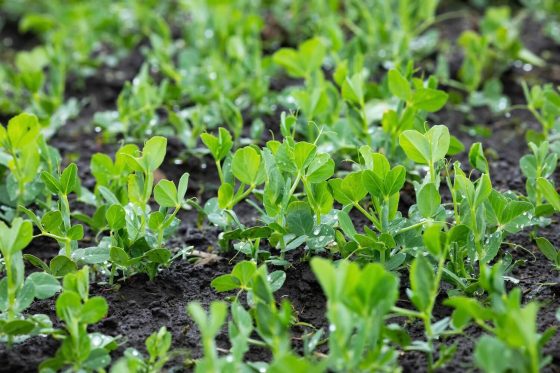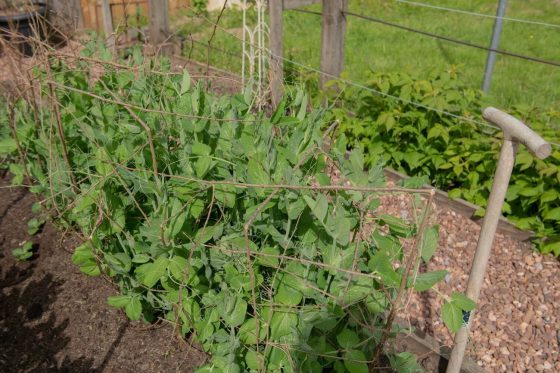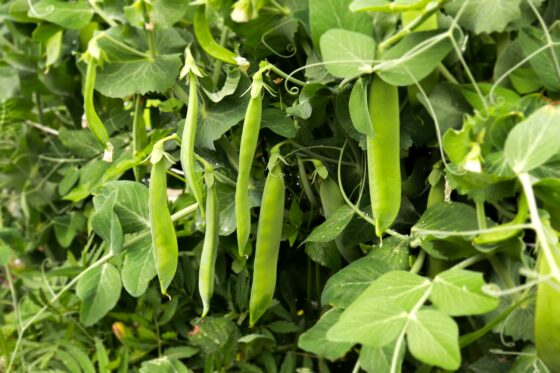Sugar snap peas: planting & caring for snap peas
Sugar snap peas are a popular summer vegetable from your own garden. We will provide you with all the important tips to successfully cultivate sugar snap peas at home.

A few years ago, the classic wrinkled peas were still the most popular pea variety. Today, the crunchy and sweeter sugar snap peas (Pisum sativum subsp. sativum convar. axiphium) are considered the consumers’ favourite. The exact origin of the sugar snap pea is not clear due to its long use to date, but it is believed to have originated in India or North Africa. Already in ancient times, sugar snap peas were served as a source of protein and the basis of many dishes.
Contents
Sugar snap peas: origin and characteristics
Sugar snap peas are known by many names, depending on the region, such as snow peas, snap peas, or mangetout. It belongs to the garden pea genus (Pisum sativum) and is thus part of the flowering plant family Faboideae, a subfamily of legumes (Fabaceae or Leguminosae). The sugar snap pea grows as an annual herbaceous plant that reproduces through the fruits that are formed inside pods. It forms climbing or creeping bluish-green main shoots that can grow up to 1.5 metres long and are covered with deciduous leaves. In addition, several thin side shoots can be formed next to the main shoot. The ovate leaves are mostly entire and only rarely serrated. The flowerhead of the sugar snap pea consists of one to three flowers, as is the case with garden peas. The white sepals are usually fused in a bell shape and are adorned with a corolla. The fertilised flower finally produces the pods, which are about 10 cm long, each containing between four and ten round seeds

Especially in delicatessens, the pods of sugar snap pea often come from overseas and arrive here by air freight. In the meantime, however, the vegetable is also grown commercially in some areas with deep and nutrient-rich soils. In your own garden cultivation is also easily feasible with a little background knowledge.
Planting sugar snap peas
The sugar snap pea has hardly any special site requirements: deep soil in a sunny, airy location already provides the best conditions. Unsuitable, on the other hand, are very sandy and very heavy clay-rich or compacted soils. The ideal soil is rich in humus, which can hold water well but does not tend to become waterlogged. Compacting the subsoil is not beneficial for pea cultivation, as this can lead to root rot more easily. If you have been growing vegetables in the same plot for a long time, you can occasionally resort to the help of a soil activator, which promotes soil life and can increase the humus content. In this way, a good supply of nutrients to the plants is ensured and the soil is sustainably protected to ensure the cultivation of vegetables in the future.
The sugar snap pea is a low-yielding vegetable. It absorbs fixed nitrogen through a symbiosis with nodule bacteria, which it incorporates into the soil when it is worked in at a later stage. Since the sugar snap pea is poorly self-tolerant, a growing break of about four to six years should be taken between planting and replanting in the same plot. This prevents the transmission of foot and wilt diseases such as Fusarium. Mixed cropping is possible without problems with carrots (Daucus carota subsp. sativus), cabbage cultivars (Brassicaceae), fennel (Foenicum vulgare), lettuce (Lactuca sativa), or radish (Raphanus sativus var. sativus).
The best time for sowing sugar snap peas is between March and early April, when damage due to prolonged periods of frost can no longer occur. Sowing too late may result in a lower yield due to reduced flowering. In milder regions, sowing is usually possible from the beginning of March, the sugar snap peas easily tolerate short frosts.
The seeds are sown directly into the bed, using a garden rake to make grooves about 3 to 5 cm deep in the loosened soil. Ideally, the grooves are aligned so that they run in a north-south direction. This ensures even exposure of the plants and thus uniform growth of the pods. A row spacing of approximately 35 cm should be maintained between two grooves so that the sugar snap pea plants have enough space for healthy growth. In the intermediate area, you can also place a trellis, so that the plant can grow in height. In this way, the sugar snap peas can reach a height of up to 1.5 metres. The seeds can then be placed in the groove at a distance of about 10 cm before the groove is filled with soil and lightly pressed down. Finally, the soil should be well watered to promote germination. Sugar snap peas begin to germinate already after one to two weeks.
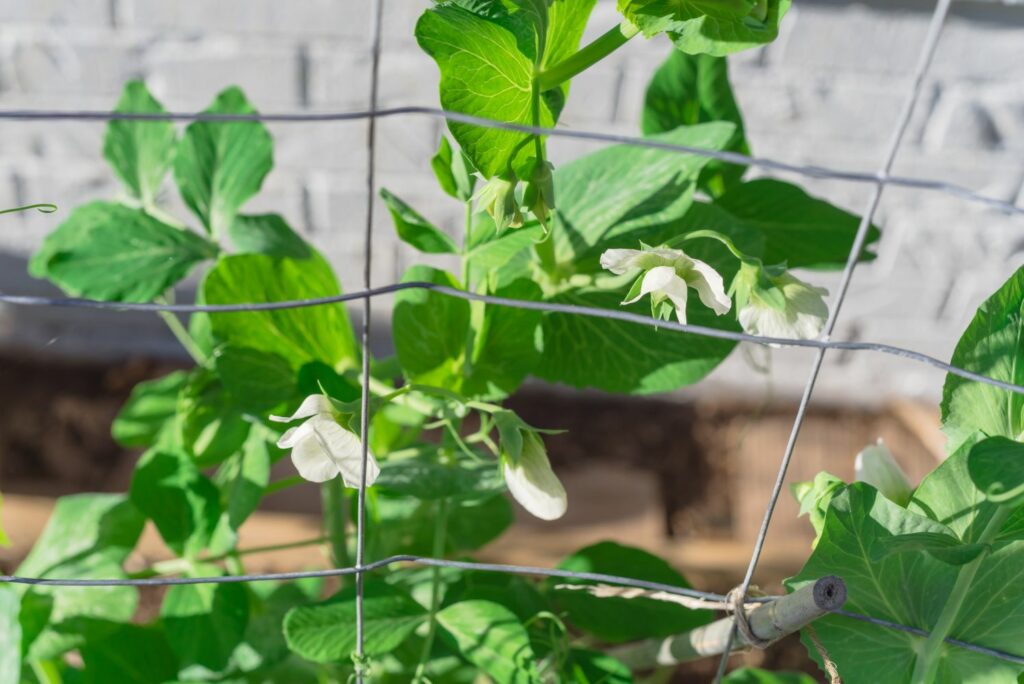
Tip: For sugar snap peas – as well as for other climbing crops – it is helpful to use a trellis. This increases yields and at the same time improves the quality of the peas. The sugar snap pea trellis allows light to reach all parts of the plant more evenly, so that the fruits can grow and ripen better. It also makes harvesting easier because you can spot most of the pods at a glance and don’t have to search for them.
Growing snap peas at a glance:
- Sowing takes place between the beginning of March and the beginning of April directly into the bed.
- The sugar snap pea seeds should be placed in a seed groove approximately 3 – 5 cm deep. The distance between seeds should be about 10 cm, and the distance between rows – about 35 cm.
- At temperatures of 10 to 18 °C, sugar snap pea seeds germinate within one to two weeks.
- A trellis improves yield and quality. It also facilitates the harvest.
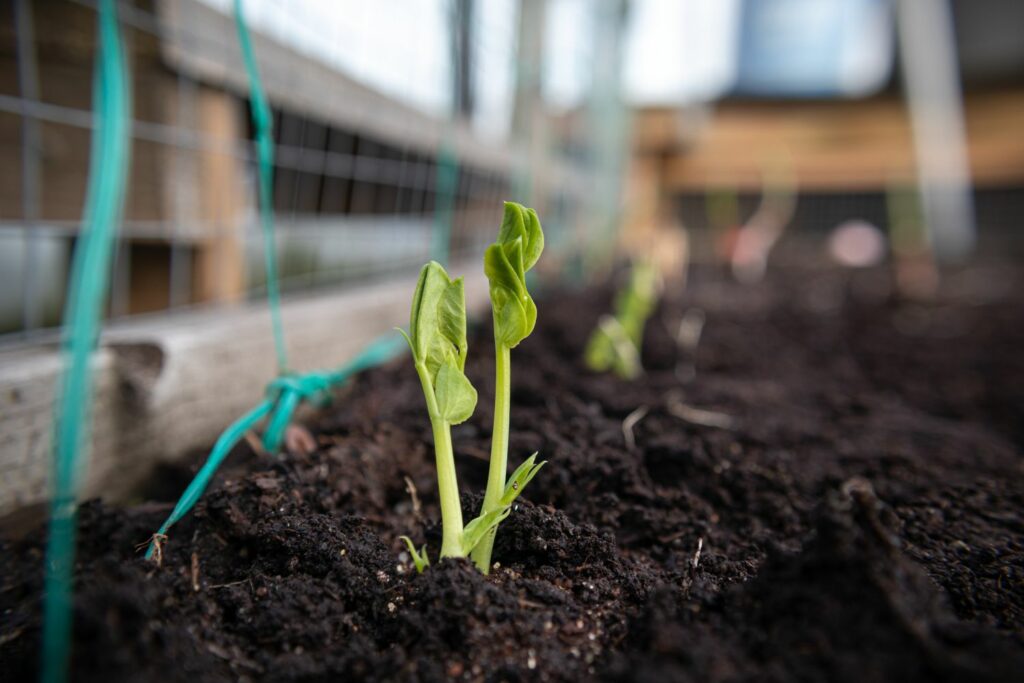
Caring for snap peas
During vegetation, mangetout peas require moderate care, especially if site conditions are suitable. From sowing, even before germination, weeds should be removed with a rake once a week. This prevents competition for nutrients and light between the mangetout peas and the weeds. Once the plants are about 15 cm tall, they begin to suppress the weeds by their own growth. Raking is now only rarely necessary, usually not at all. In addition, the soil around the young plants can now be mounded, which promotes lateral root formation and thus improves water and nutrient uptake. In addition, the plants can be guided towards the trellis and attached to it with the first shoots. During growth, it is important to periodically direct the sugar snap peas further up along the trellis, so that all parts of the plant get an equal amount of light and grow well.
Sugar snap peas are not hardy. As annual herbaceous plants, they die back in autumn and naturally resprout in the spring from seeds from the pods.

Watering and fertilising
Due to its deep roots, the sugar snap pea is able to provide itself with a good supply of water independently. However, until the seeds germinate, it is important to keep the soil constantly moist to support initial growth. In dry regions and during longer dry periods in summer, regular watering is important so that the plants do not dry out.
Sugar snap peas are legumes that live in symbiosis with so-called nodule bacteria. These nodule bacteria are able to fix nitrogen from the air and convert it into nitrate, making it available to plants. In healthy soil conditions, this eliminates the need for further fertilisation throughout the vegetation period.
Pruning sugar snap peas
Pruning is not necessary for sugar snap peas. If the growth becomes too rampant, any shoots that stray too far can be easily guided back to the trellis, but they can also be cut off if necessary. Diseased or dry shoots and leaves should be removed regularly.
Caring for mangetout peas properly:
- initially, any weeds should be kept small and removed with a rake.
- During growth, periodically guide the plants along the trellis so that all parts of the plant receive an equal amount of light.
- Sugar snap peas belong to the legume family and live in symbiosis with nodule bacteria that can fix nitrogen from the air. Therefore, additional fertilisation is not necessary.
- In drought conditions, watering must be done regularly.
- The sugar snap pea does not need to be pruned.

Growing snap peas in a pot
Sugar snap peas can also be planted in a pot, if you follow a few points.
Due to their sensitivity to prolonged periods of cold weather, sugar snap peas should not be moved outdoors until mid-April, but they can be grown in advance indoors.
The pot should be sufficiently large, because the sugar snap pea develops a deep root system. A suitable substrate is a high-quality vegetable soil, the composition of which provides the plant with ideal nutrients. At the same time, the loose structure of the soil will support healthy root growth. Our Plantura Organic Tomato & Vegetable Compost, not only meets the demands of the plant, it is at the same time made from sustainable, organic materials and is completely without peat. The further procedure for sowing is the same as for bed sowing – only mangetout peas can be sown more densely with a spacing of about five centimetres.
When growing in a pot, it is important to pay attention to an even water supply, because the plants cannot rely on water from deeper layers of soil.
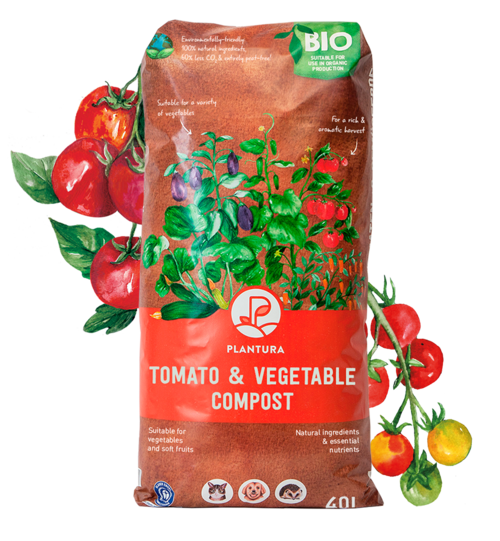
- Perfect for tomatoes & other vegetables such as chillies, courgettes & more
- For strong & healthy plant growth as well as an abundant vegetable harvest
- Peat-free & organic soil: CO2-saving composition
Harvesting and storing
Harvesting is usually possible from June onwards, when the pods are still light green and you can easily see the peas inside the pods from the outside.
To harvest sugar snap peas, you can pluck the ripe pods from the plant and collect them. The pods should not be stored for too long, because after one or two days at the latest, the sugar they contain increasingly converts into starch, changing the taste. The freshly harvested mangetout peas can be blanched briefly and then frozen without hesitation to be gently thawed again at a later time. Overripe pods quickly lose flavour and quality.
Taste and use of sugar snap peas
The taste of sugar snap peas, as the name suggests, is much sweeter than that of other types of peas. You can already harvest young pods that are not quite ripe. At this stage, the sugar snap peas are very suitable for eating raw. Unlike wrinkled peas, sugar snap peas do not have a parchment layer inside the pod, which is why the pods can be eaten whole. That’s where the name “mangetout” comes from, taken from French: the French “mange tout” translates as “eat everything”. The pods are also very good cooked, sautéed or boiled.
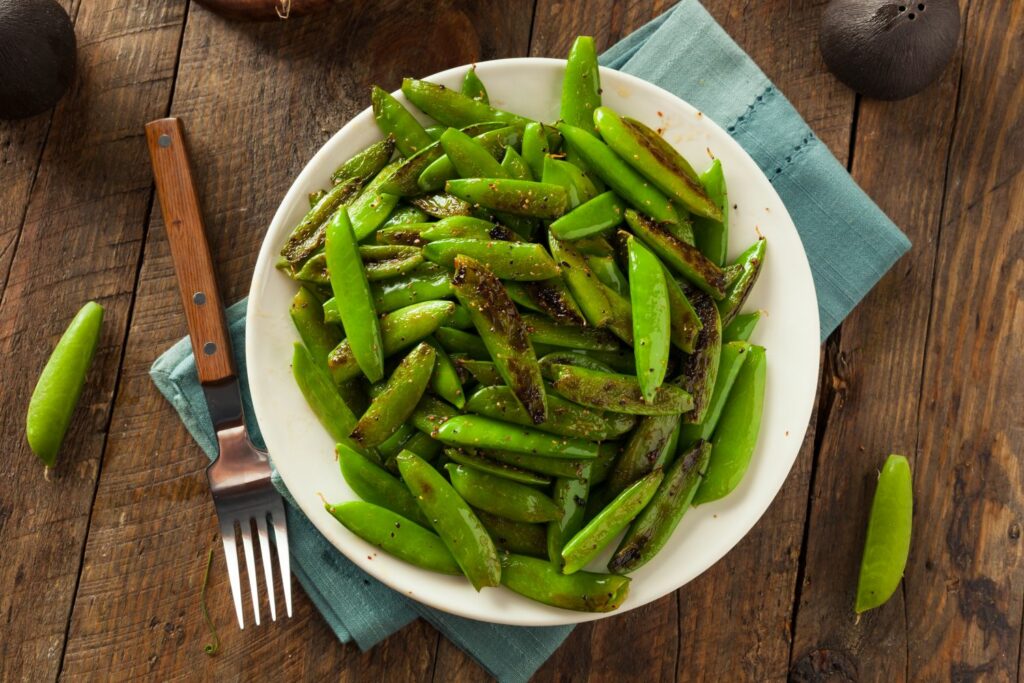
Common pests and diseases
Fungal diseases and pests can occasionally trouble the plant. Infestation with powdery mildew is favoured by damp, cool mornings. In contrast to other fungal diseases, powdery mildew can also attack the plant when the leaves are wet for a short period of time; during the day it can also be dry and warm. To prevent infestation, it can help to grow the sugar snap peas in a place that already receives sunlight in the morning and to water them in the morning instead of in the evening. Through breeding, mildew-resistant cultivars have been developed that are used especially in home gardens and in organic cultivation.
The fusarium fungus is the second most important antagonist that often attacks legumes such as sugar snap pea. If the plant is affected by Fusarium, first the leaves will discolour slightly, then wither, and in the final stage turn black. You can prevent infestation with the Fusarium fungus by considering an appropriate crop rotation.
The pea moth is the only relevant animal pest of sugar snap peas. It attacks them mainly between May and June, when the plants form the fruiting pods. If the pest has already been sighted in your own or a neighbour’s garden, you should resort to protective netting throughout this period to keep it away from healthy plants.
Are you still looking for more exciting vegetables for your garden? Here we will tell you how to plant and care for perennial sea kale, for example.
